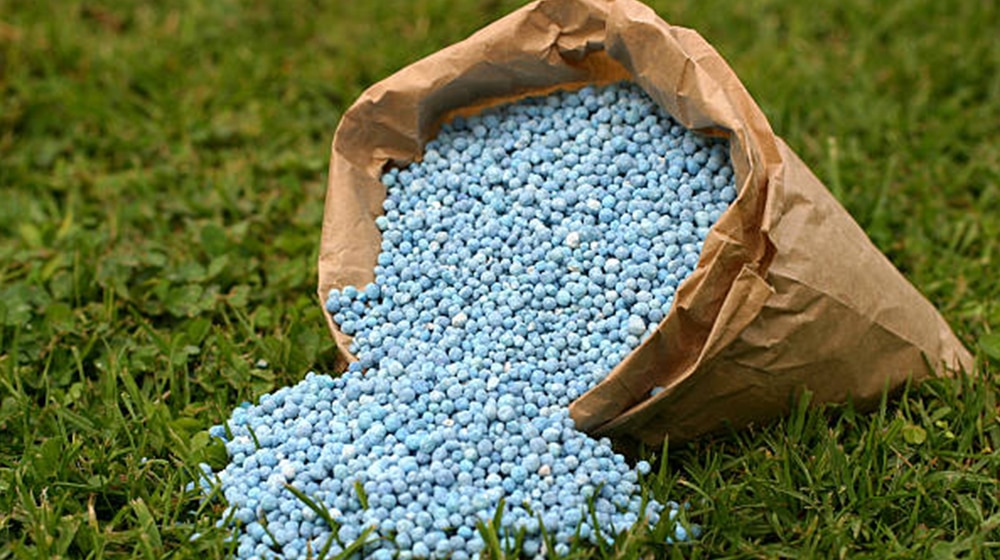Wheat sowing has begun and with that, I have started to get queries about which seeds should be the best ones for the highest yields but the problem arises when I ask them how can they be sure that it’s the same variety that they are being promised.
Everything from seeds and fertilizers to pesticides and all kinds of agrochemicals make the bedrock of our food supply chain but the problem of fake agriculture inputs begins far upstream than you can think of.
The only reason countless unapproved seed varieties hit the markets is because someone leaked them from the system and since most of these departments are understaffed and underfunded, the oversight is not just there so from Wheat to Cotton, a farmer cannot be sure of the quality of the seed they are buying.
For Wheat, it’s a matter of grading the old varieties, giving them a seed treatment and changing the labels but for Cotton, it may take coloring them and giving them a name nobody ever heard of. The new ‘quality’ Wheat seed is often priced roughly double the Wheat price (Rs. 7,500 to Rs.8,000 per maund at the moment) so a little bit of effort and the profit margins are huge and since nobody is interested in building a real seed industry, anyone can buy & sell the seeds, on social media if a shop is too much for you.
But the bigger problem is the agrochemicals including but not limited to fertilizers and pesticides because unlike seeds are not just unapproved but are often completely fake.
The extent of the problem of counterfeit agricultural products and how it spreads across different regions across the country is largely unknown since there has been a lot of research on it but it’s worse in areas like Baluchistan, a large and remote province with a weak dealer network and infrequent regulatory visits. A 2018 study by the Food and Agriculture Organization of the United Nations found that 40 percent of fertilizer samples collected in Balochistan were counterfeit.
“Counterfeit agricultural products can include fake fertilizers, pesticides that are not registered or that are not properly labelled, Seeds that are not true to type and livestock that has been given illegal hormones or antibiotics” explained Hamza Nizam Kazi, Head of Legal Affairs at Jaffer Agro Services while talking to ProPakistani.
He said that these products can have a number of negative consequences, including reduced crop yield, increased costs for farmers, damage to agricultural land and health problems for consumers.
In May, the Punjab Government announced a crackdown against adulterated pesticides to support Cotton cultivation resulting in a province-wide strike by the Punjab Pesticide Dealers Association (PPDA), the tests are still ongoing but the strike was called off after negotiations.
PPDA claimed that government tests show 97 percent of their samples are satisfactory and they are adding far more value by providing chemical products to farmers on loans but the case of adulterated pesticides is not wrong at all as well. Some herbicides you buy will kill the actual plant but not the pests they are supposed to eliminate.
It’s just that the seasonal crackdown, using decade-old SOPs, older labs and lack of technology drive solution-making is not the way to rightly address the situation in the long term.
The skyrocketing prices of agriculture inputs, black marketing, shortages and declining profit margins of farmers (except in the case of Wheat in 2022) during the last few years have brought a surge of a new age of growth supplements, bio, liquid, imported and organic fertilizers i.e. humic acid in the market which provide additional value to the conventional fertilizers and be the difference between average and excellent productivity and some even claim that you may not need the chemical fertilizers anymore.
Regardless of their efficacy and how farmers have adopted these over the years, with a surge of every new trend, there are those who try to benefit by selling counterfeit products and since farmers are not familiar with these products, it’s hard to spot which is fake and which is not.
For those who don’t know, fertilizers are black-marketed all the time which means, first, the farmers have to pay higher than the retail price for the inputs only to get low-quality inputs. Does anybody else think we need less government oversight?
Diammonium Phosphate (DAP) is the most vulnerable to being counterfeited or adulterated, followed by Urea, Potash, Single Superphosphate (SSP), and NPK blends. Fake urea is often created by blending urea with other substances, leading to a dilution of its nitrogen content, or by using lower-quality urea as a base.
“Some people even use Calcium Ammonium Nitrate (CAN) as it’s price is relatively lower and colour it to fake it as DAP and since the packaging and branding often completely resemble the leading fertilizer companies, there is no way for farmers to identify the difference,” commented a local dealer while talking to ProPaksitani
He added that colored DAP can be spotted by mixing it with water if the colors are water soluble but otherwise, even the most experienced farmers are unable to see the difference.
Some counterfeit DAP versions may also have a reduced phosphorus content, and it’s often adulterated with additional materials to cut production costs, the same is the case of Potash fertilizers as well.
The homogeneous nature of all the fertilizer products and the little or no innovation by the manufacturers in differentiating from each other in the industry over the years have played a key role in enabling these elements to play with the farmers’ savings and human health.
“When agricultural products are all the same, it is difficult for consumers to tell the difference between genuine and counterfeit products. This makes it easier for counterfeiters to sell their products without being detected,” agreed Tayeyaab Jamil, Product Manager at Jaffer Agro Services while talking to ProPakistani.
He added that the lack of innovation in the agricultural sector has made it difficult for manufacturers to develop new products that are differentiated from existing products. This has made it even more challenging for consumers to choose between different agricultural products and has made them more vulnerable to counterfeit products.
He also said that various solutions are available for traceability and authentication, such as holographic stickers, QR codes, color-shifting stickers, and tear-apart labels. However, these commonly used methods are susceptible to replication.
We have plenty of laws regulating these market practices, at least on paper like the Fertilizer Control Act, of 1999, the Provincial Essential Commodities Act, of 1971 (amended in 1973), the Punjab Fertilizer (Control) Order, of 1973.
These laws and regulations give the government wide-ranging powers to regulate the fertilizer sector. For example, the government can register fertilizer manufacturers and distributors, set fertilizer prices, control the import and export of fertilizers, inspect fertilizer production facilities and warehouses, take samples of fertilizers for testing and prosecute individuals and businesses that violate fertilizer laws and regulations and are involved in counterfeiting products.
The world is moving towards sustainable food systems where the use of even certified agrochemicals is being eliminated from the food supply chain and while Pakistanis may not ‘deserve’ that luxury at the moment, the least farmers and consumers both have every right to expect that the agrochemicals being supplied to them will be certified.
In addition to the strict enforcement of the existing laws, overhauling the local governments to effectively use these laws instead of colluding with these elements and dumping everything on federal and provincial departments, and the use of technology that can’t be replicated, there is also a need for more farmer cooperatives that can cut short the long supply chains between the manufacturers and farmers as that enable some elements to introduce these fake agricultural inputs and exploit farmers.
“Farmer cooperatives can help farmers reduce their costs by negotiating better prices with manufacturers and by aggregating their purchases. It can further help in improving the quality of the inputs they use by working directly with manufacturers” added Kazi
He said that farmer cooperatives can give farmers more bargaining power in the marketplace by allowing them to sell their products collectively and farmers can have access to information readily available about new technologies, market trends, and government programs.
Most discussions in policy circles about Pakistan’s Agriculture sector begin and end with calls for reducing the role of government, ending the support prices and taxing the agriculture income and while it’s true that over-regulation has damaging effects we can agree to disagree on some of the points, there is an area which needs the highest level of regulations, now more than ever and that’s the black market of fake agriculture inputs.






















what does this mean